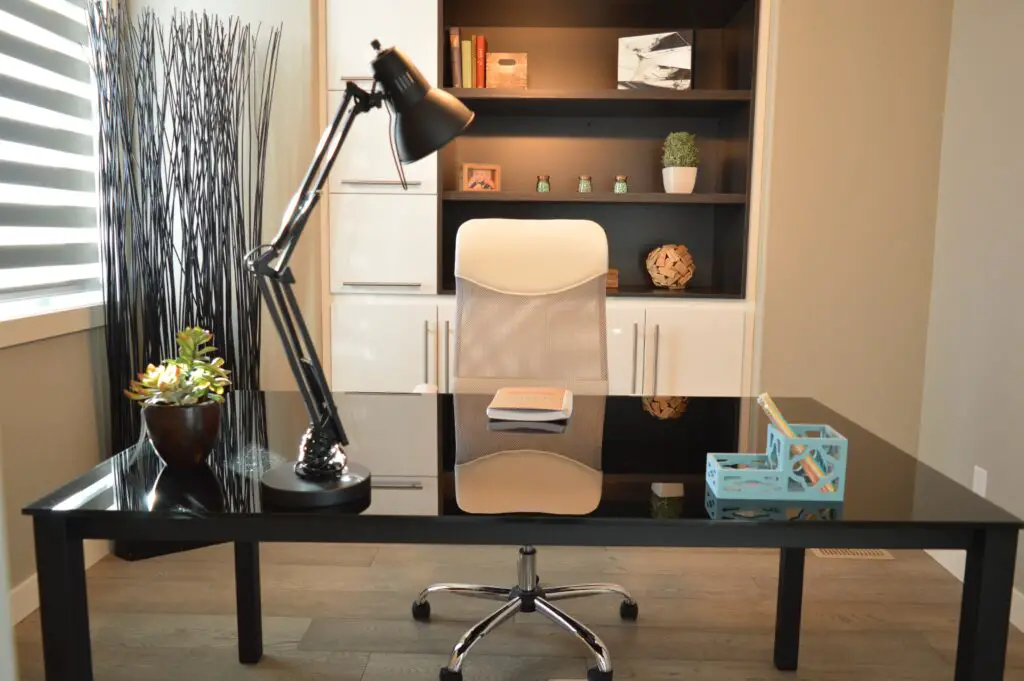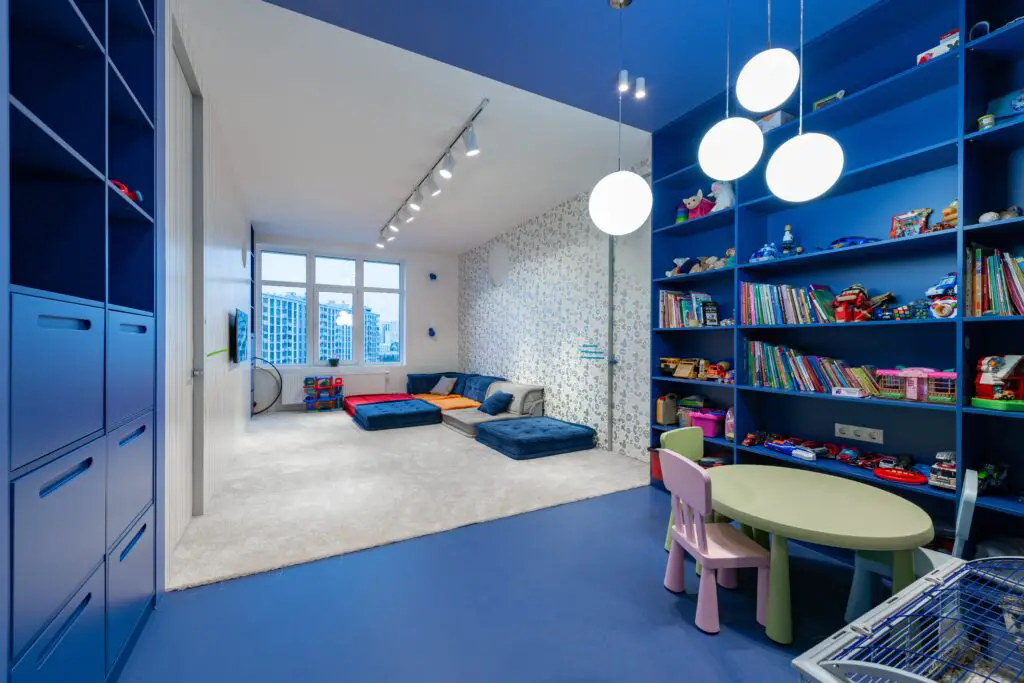Working from home has become a norm for many professionals, offering the flexibility and comfort that traditional office settings often lack. However, to truly make the most of your remote work experience, setting up a productive home office is crucial. A well-designed home office can enhance your focus, productivity, and overall well-being.
In this comprehensive guide, we will walk you through the essential steps to create an efficient and inspiring home workspace. From assessing your needs and space to establishing a productive routine and managing your health, we’ve got you covered. Let’s dive in and unlock the secrets to a successful home office setup!
I. Assessing Your Needs and Space

The first step in setting up a productive home office is to assess your unique needs and the available space in your home. Start by identifying your work requirements and goals. Are you a freelancer, entrepreneur, or remote employee? Understanding your specific tasks and work style will help you tailor your office setup accordingly.
Next, choose the right location for your home office. Ideally, opt for a quiet and dedicated space that allows you to focus without distractions. If you don’t have a spare room, consider setting up your office in the corner of your living room or bedroom.
Ergonomics play a vital role in ensuring your comfort and productivity during long work hours. Invest in an ergonomic desk and chair that support proper posture and reduce strain on your back and neck.
II. Selecting the Right Furniture and Equipment
The right furniture and equipment are essential components of a productive home office. A comfortable and spacious desk will provide ample workspace for your computer, paperwork, and other necessities. Ensure it is positioned to maximize natural light and avoid glare on your screen.
Proper lighting is crucial for reducing eye strain and maintaining focus. Consider investing in adjustable desk lamps or floor lamps with warm lighting to create a cozy yet well-lit atmosphere.
Selecting the right office equipment is equally important. Invest in a reliable computer, printer, and other tools necessary for your work. Additionally, organize your office with shelves, filing cabinets, and storage solutions to keep your space clutter-free and efficient.
III. Setting Up the Technology Infrastructure

A productive home office requires a robust technology infrastructure. Start by ensuring a stable and fast internet connection to avoid disruptions during virtual meetings or while accessing cloud-based tools.
Security is a top priority when working from home. Implement a secure network with a strong password and consider using a virtual private network (VPN) for added protection. Install necessary software and productivity tools, such as project management platforms or communication apps, to streamline your workflow.
Troubleshoot common tech issues that may arise during remote work and have a backup plan in place to minimize downtime.
IV. Designing an Inspiring and Productive Environment
The aesthetics of your home office can significantly impact your productivity and creativity. Choose colors that promote focus and calmness, such as blues or greens, and personalize your space with decor that reflects your personality.
Integrate natural elements, like potted plants or a small indoor fountain, to improve air quality and create a refreshing environment. Minimize distractions by organizing your space and keeping personal items in a designated area.
V. Establishing a Productive Work Routine

Working from home can blur the lines between work and personal life, leading to burnout or reduced productivity. Establishing a structured work routine is essential to maintain a healthy balance.
Set specific working hours and stick to them as much as possible. Create a daily and weekly schedule that includes focused work periods and breaks. Use productivity techniques like the Pomodoro Technique to stay focused and avoid procrastination.
Embrace work-life balance by dedicating time to family, hobbies, and relaxation. Create physical and mental boundaries between your workspace and living areas.
VI. Managing Health and Well-being
Prioritizing your health and well-being is fundamental to sustaining productivity in the long run. Ensure your home office setup adheres to ergonomic principles to prevent physical strain. Invest in an ergonomic chair with lumbar support and a desk that allows your feet to rest flat on the floor.
Promote mental well-being by incorporating relaxation and mindfulness practices into your daily routine. Take short breaks to stretch or meditate, and consider adding a cozy corner with a comfortable chair for relaxation.
Regular exercise is essential for maintaining energy levels and focus. Schedule short exercise breaks during your workday, such as stretching or walking around your home.
A balanced diet and staying hydrated are critical to maintaining energy and focus. Keep healthy snacks and water readily available in your home office.
VII. Communication and Collaboration Strategies

Effective communication and collaboration are vital when working remotely. Choose the right communication tools that suit your team’s needs, whether it’s video conferencing, instant messaging, or project management software.
Practice virtual meeting etiquette to ensure smooth and productive discussions. Encourage active participation and use screen-sharing capabilities to share ideas and progress.
Stay connected with colleagues and clients through regular check-ins and updates. Foster a sense of camaraderie and teamwork despite the physical distance.
VIII. Organizing and Managing Your Home Office Space
A clutter-free and well-organized home office contributes to a focused and efficient work environment. Implement an organization system for both physical and digital items.
Invest in storage solutions like shelves, cabinets, and drawers to keep documents and supplies neatly organized. Digitize paperwork whenever possible to reduce physical clutter.
Regularly clean and maintain your home office to promote a clean and inspiring workspace. Dedicate time at the end of each workday to tidy up your desk and reset it for the next day.
Customize your organization system to suit your workflow and preferences, ensuring that everything has its designated place.
IX. Security and Privacy Considerations

Protecting your data and ensuring the privacy of your work are paramount when working from home. Use strong passwords and enable multi-factor authentication for all your accounts.
Secure physical documents and sensitive information in locked filing cabinets or safes. Shred documents containing personal or confidential data when no longer needed.
Regularly back up your important files and data using secure cloud storage or external hard drives. In case of a data breach or equipment failure, having backups ensures you can quickly resume work.
X. Troubleshooting and Problem-Solving
Setting up a productive home office may come with its fair share of challenges. Acknowledge common issues and learn how to troubleshoot them effectively.
When productivity slumps, try changing your environment or taking short breaks to refresh your mind. Experiment with different productivity techniques to find what works best for you.
Technical issues may arise, causing disruptions to your work. Have a troubleshooting plan in place or seek professional support when needed.
Adaptability is key when working from home. Embrace change and be open to adjusting your office setup or routine as circumstances evolve.
Conclusion
Creating a productive home office is more than just setting up a desk and a computer. It involves careful planning and consideration of your work needs, space, and overall well-being. By following the essential steps outlined in this guide, you can design an efficient and inspiring workspace that promotes productivity and work-life balance.
Remember to assess your needs, invest in quality furniture and equipment, and prioritize your health and well-being. Cultivate effective communication and organization strategies to enhance collaboration and efficiency. Lastly, stay vigilant about security and be prepared to troubleshoot challenges as they arise.
With this comprehensive guide at your disposal, you are now equipped to build the perfect home office that empowers you to thrive in your remote work journey.
Frequently Asked Questions (FAQs)
1. Why is setting up a home office important for productivity?
Setting up a home office is crucial for productivity as it provides a dedicated space for work, minimizes distractions, and optimizes your environment for focus. A well-designed home office can significantly enhance your efficiency and creativity.
2. What are the key elements of a productive home office?
The key elements of a productive home office include ergonomic furniture, proper lighting, essential office equipment, an inspiring and clutter-free environment, and a structured work routine. Prioritizing your health and well-being is equally important for maintaining long-term productivity.
3. How can you balance work and personal life when working from home?
Balancing work and personal life when working from home involves setting specific working hours, creating a daily schedule with designated breaks, and establishing boundaries between work and living areas. Allocating time for family, hobbies, and relaxation helps maintain a healthy work-life balance.
4. What security measures should you take when setting up a home office?
When setting up a home office, prioritize security by securing your internet connection, using strong passwords and multi-factor authentication, and backing up important data regularly. Additionally, keep sensitive documents and information secure in locked storage.
5. How can you troubleshoot common home office challenges?
To troubleshoot common home office challenges, try adjusting your workspace, take short breaks to refresh your mind, and experiment with different productivity techniques. In case of technical issues, have a troubleshooting plan in place or seek professional support when needed. Be adaptable and open to making necessary changes to optimize your home office setup.



